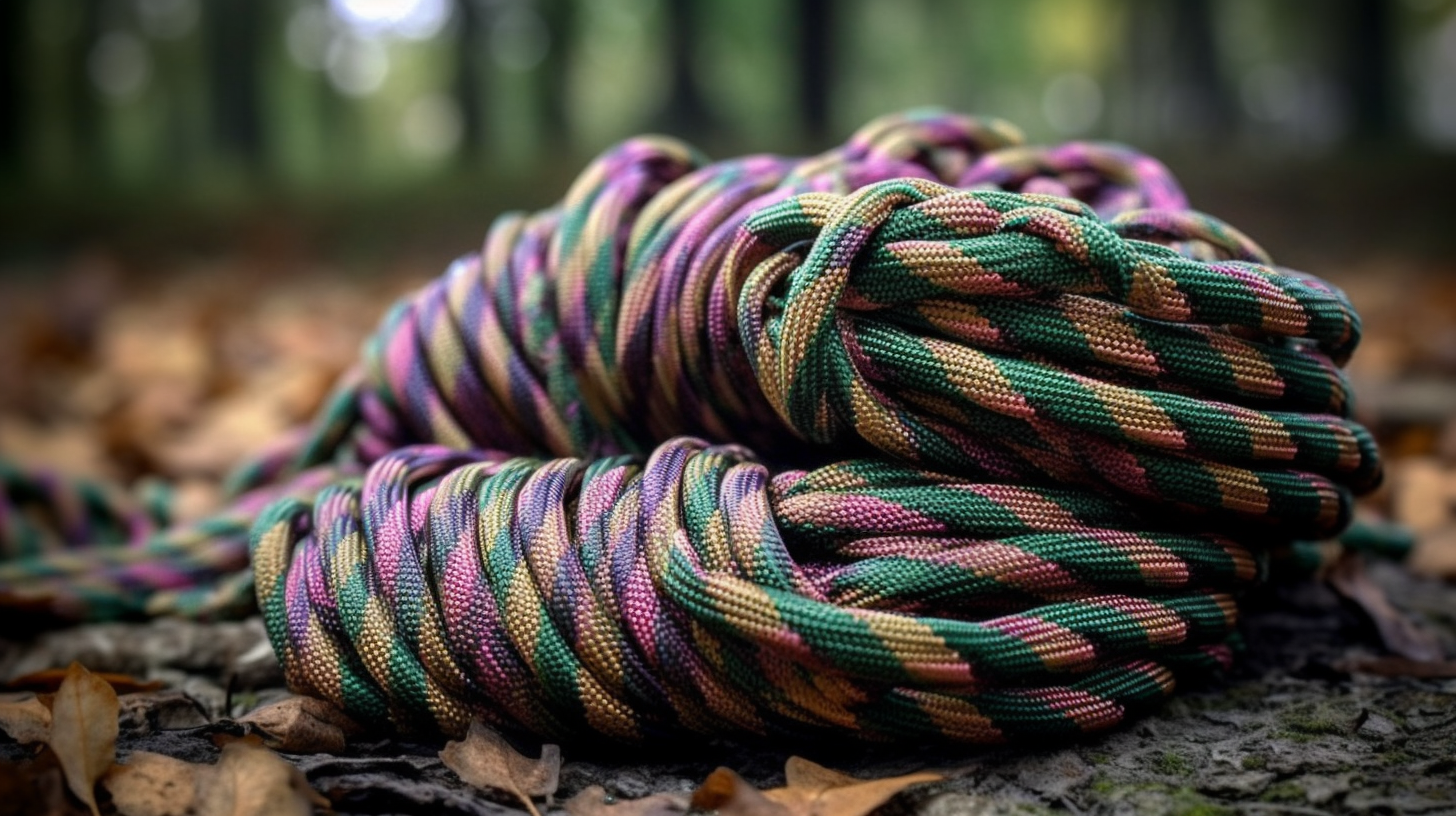Gulf Island Campgrounds
Explore Gulf Island campgrounds in BC for peaceful, scenic, and unforgettable coastal camping adventures. Plan your perfect island escape.
Whether you’re hanging a tarp to shield yourself from rain, securing your gear, or setting up camp, you need a rope that’s strong, durable, and reliable. With so many options on the market, it can be tricky to know which one is best for your needs.
In this article, we’ll discuss:
When you’re out in the wild, having the right gear can make all the difference, and ropes are no exception. A reliable rope can be a true multitool, used for everything from securing a tent to hanging up your food to keep it safe from wildlife. But not all ropes are created equal, and the type of rope you bring on your camping trip matters more than you might think.
The Importance of strength, weight, and durability The first thing to consider when choosing a rope for camping is strength. You need a rope that can handle weight without snapping, especially if it’s going to be used for heavy tasks like hoisting gear or setting up a shelter. Durability is equally important—outdoor conditions can be harsh, and a rope that frays easily won’t last long.
Then, there’s weight. The lighter the rope, the easier it is to pack, but lightweight ropes can sometimes compromise on strength. Finding the right balance between these three factors is essential to ensure you’re well-prepared, whether you’re backpacking through rugged terrain or car camping at a local site.
Some common uses for a good camping rope include:
When it comes to camping, not all ropes are created equal. From the material they’re made of to their strength and durability, each type of rope has its own pros and cons. To make your camping experience easier, here are five of the best ropes for different camping needs, each with unique benefits to consider.
Paracord is one of the most versatile ropes for camping. Originally used in parachutes, it’s lightweight yet strong, making it an excellent choice for a variety of tasks. It’s also easy to pack due to its flexibility and doesn’t take up much space in your gear.
Shop: Gear Aid GA 550 Paracord
Nylon is known for its high strength and elasticity, making it ideal for tasks where stretch is beneficial, like securing loads or creating shock-absorbing lines. It’s also resistant to abrasions, so it can handle rough surfaces without breaking down.
Shop: Mammut 2mm Nylon Static Cord / Mammut 7mm Nylon Static Cord
Polypropylene is a great budget option that floats on water, which makes it useful for water-related camping activities like tying down rafts or securing a boat. However, it’s not as strong as other ropes on this list, so it’s better suited for lighter tasks.
For campers who prefer a natural option, manila rope is a traditional, sturdy rope made from natural fibers. It’s tough and can handle heavy-duty tasks like setting up a tarp or tying down gear. However, it tends to break down over time when exposed to moisture and sunlight.
When choosing the best rope for camping, one of the key decisions you’ll face is whether to go with synthetic or natural fiber ropes. Both have their advantages and drawbacks, depending on your camping style, the conditions you’ll face, and what you need the rope for. Here’s a breakdown of the differences between synthetic and natural ropes to help you make an informed choice.
Synthetic ropes, such as nylon, polyester, and paracord, are made from man-made fibers and have become a popular choice for most modern campers. These ropes are known for their strength, durability, and resistance to moisture, which makes them ideal for harsh outdoor environments.
Advantages:
Disadvantages:
Natural ropes are made from fibers such as manila, sisal, or cotton. These ropes have been used for centuries and are still favored by some traditional campers or for specific uses. While they may not have the advanced properties of synthetics, natural ropes bring their own benefits to the table.
Advantages:
Disadvantages:
Ultimately, the choice between synthetic and natural ropes depends on your camping needs and environment. If you’re looking for a lightweight, durable option that can withstand moisture and intense weather, synthetic ropes are likely your best bet. On the other hand, if you prefer an eco-friendly rope with great knot-holding capabilities for lighter tasks, a natural rope could be the perfect fit.
For most campers, synthetic ropes like paracord or nylon will provide the best combination of strength, versatility, and reliability, especially in challenging outdoor conditions.
Once you’ve invested in a good camping rope, it’s important to take care of it to ensure it lasts for many trips. Proper maintenance and storage can extend the life of your rope, keeping it strong and safe for use in a variety of camping situations. Here are some key tips to keep your rope in top condition.
Camping ropes can get dirty, especially when used in harsh environments or exposed to mud, sand, and moisture. Regular cleaning is essential to prevent dirt and debris from wearing down the fibers over time.
For synthetic ropes (like nylon or paracord), simply rinse the rope in cool water to remove dirt and grime. If the rope is particularly dirty, you can use a mild soap, but be sure to rinse thoroughly to avoid leaving any residue.
For natural ropes (like manila), it’s best to use a dry cloth to remove debris, as excessive moisture can cause rotting or weakening of the fibers.
After cleaning, always hang your rope to air dry completely before storing it. Never store a wet rope, as moisture can lead to mold, mildew, and deterioration, especially in natural fiber ropes.
Proper storage is key to maintaining the integrity of your rope. Ropes should be stored in a cool, dry place, away from direct sunlight, as UV exposure can weaken synthetic fibers like nylon over time.
Before each camping trip, it’s a good habit to inspect your rope for signs of damage. Look for fraying, cuts, or signs of abrasion, especially around areas where the rope experiences high friction, like knots or anchor points.
Replacing your rope when necessary ensures your safety and the success of your camping setup.

A camping tarp, short for tarpaulin, is a versatile sheet made of waterproof or water-resistant material, typically polyester or nylon. It is used to create a protective barrier against rain, wind, and other outdoor elements. Camping tarps come in various sizes and shapes, allowing you to customize your shelter according to your needs.
Shop: MEC Scout Tarp / MEC Silicone Scout Tarp
While a camping tarp is a valuable asset, it’s the rope that ensures it stays firmly in place. Ropes are used to tie down the corners and edges of the tarp, securing it to trees, stakes, or other sturdy structures. They provide the necessary tension and support to keep the tarp taut and stable, preventing flapping or sagging.
In addition to securing the tarp, ropes also allow you to manipulate the shape and angle of your shelter. By adjusting the tension and positioning of the ropes, you can create different configurations, such as A-frames, lean-tos, or even hammock-like setups. The versatility of ropes enables you to adapt your shelter to different terrains, weather conditions, and personal preferences.
When selecting the best rope for your camping tarp, there are several important factors to consider. These factors will help you choose a rope that is not only suitable for your needs but also ensures the safety and effectiveness of your tarp setup.
The strength of the rope is crucial in ensuring that it can bear the weight and tension required to secure your camping tarp. When considering rope thickness, opt for a thicker rope if you’re planning to set up a larger tarp or if you anticipate challenging weather conditions. Thicker ropes generally have higher weight capacities and provide greater stability. However, keep in mind that thicker ropes can be heavier and bulkier to carry, so find the right balance between strength and manageability.
The length of the rope is another important consideration. It’s essential to have enough rope to securely tie down all the corners and edges of your tarp while also allowing for flexibility in adjusting the tension and shape of your shelter. To determine the right length, measure the distance between your desired anchor points and add a few extra feet for knots and adjustments. It’s better to have a slightly longer rope than to find yourself short in length when setting up your tarp.
Camping can take you to various environments, each with its own weather conditions and challenges. Therefore, it’s important to choose a rope that is durable and weather-resistant. Look for ropes that are specifically designed for outdoor use and can withstand exposure to sunlight, moisture, and temperature fluctuations. Ropes made from materials like nylon or polyester are often the best options for their resistance to UV rays, abrasion, and rot. Consider the climate and conditions of your camping destination to ensure your chosen rope can withstand the elements you might encounter.
Choosing the right rope for camping can significantly enhance your outdoor experience, making tasks like setting up a tarp or securing your gear easier and safer. With a wide variety of ropes to choose from, it’s essential to consider factors like strength, durability, and resistance to the elements.
To recap, here are the three most important takeaways:
Subscribe to our newsletter to get the outdoors delivered right to your inbox.
